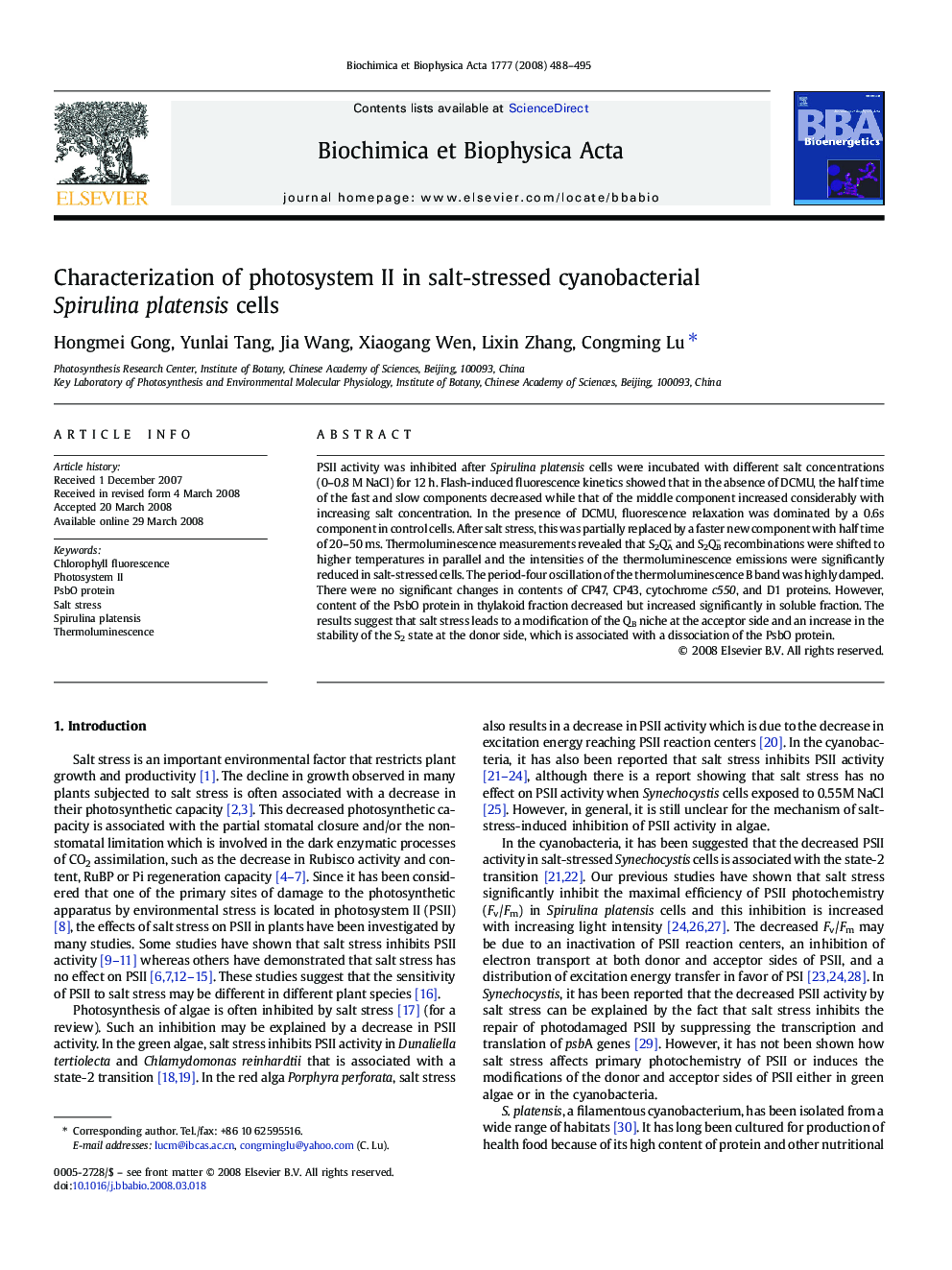| Article ID | Journal | Published Year | Pages | File Type |
|---|---|---|---|---|
| 1943386 | Biochimica et Biophysica Acta (BBA) - Bioenergetics | 2008 | 8 Pages |
PSII activity was inhibited after Spirulina platensis cells were incubated with different salt concentrations (0–0.8 M NaCl) for 12 h. Flash-induced fluorescence kinetics showed that in the absence of DCMU, the half time of the fast and slow components decreased while that of the middle component increased considerably with increasing salt concentration. In the presence of DCMU, fluorescence relaxation was dominated by a 0.6s component in control cells. After salt stress, this was partially replaced by a faster new component with half time of 20–50 ms. Thermoluminescence measurements revealed that S2QA− and S2QB− recombinations were shifted to higher temperatures in parallel and the intensities of the thermoluminescence emissions were significantly reduced in salt-stressed cells. The period-four oscillation of the thermoluminescence B band was highly damped. There were no significant changes in contents of CP47, CP43, cytochrome c550, and D1 proteins. However, content of the PsbO protein in thylakoid fraction decreased but increased significantly in soluble fraction. The results suggest that salt stress leads to a modification of the QB niche at the acceptor side and an increase in the stability of the S2 state at the donor side, which is associated with a dissociation of the PsbO protein.
